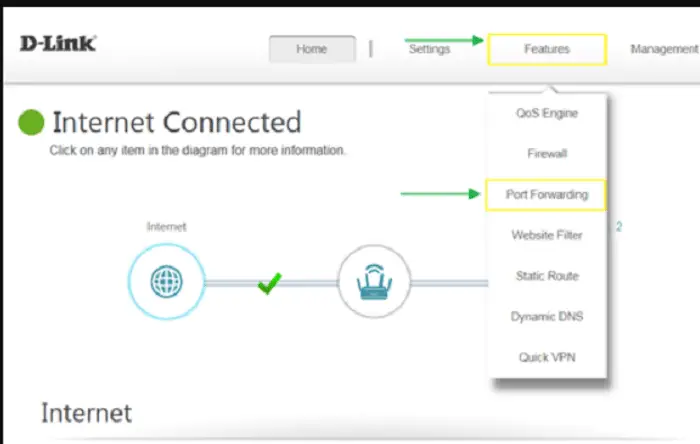Security is the biggest concern and threat to all of us. With all the breaches and cyber-security crimes happening, it’s not hard to guess why. Hence, to ensure secure interactions on all fronts, we take all sorts of measures. These measures are formally and technically termed as Port Forwarding. In this article, we will discuss how to set up Port Forwarding.

Set Up Port Forwarding Concerning Routers
One such scenario is associated with our routers. They, by default, come with security barriers up. Those barriers don’t allow specific traffic to reach us, the ones they may deem potentially harmful. That is 90 out of 100 times, unproblematic. That is until we want to access something for which we have to bring down the said barriers.
I’m sure it has happened to everyone. The scenario where people use cracked versions of Netflix/amazon prime is a classic example. When you try to watch your favorite web-series in the cracked version, It just won’t load.
See Also : How To Do Asus Router Port Forwarding [Complete Guide]
What do we do then? We use an intermediator, of the likes of a proxy or a VPN, which intercepts things, using port forwarding. And when you try to load it again, it works like a charm.
A similar thing is required when you use a resource or a game, which generally you would not be allowed to access. The access is made a possibility by opening a port or bringing down a part of the closed barrier.
What happens internally is that the intermediate IP address alters the address of the incoming packet. Thus, creating an illusion and making the access possible of the previously denied request.
The Procedure to Set Up Port Forwarding
Technically, it is the procedure where data packets are blocked off and altered. Once we accomplish that, we have to send them off at another destination, known as Port Forwarding. It is configured at the destination system, to protect from and ward off unpredictable and un-secure traffic.
Understanding Port Forwarding Set up with an Example
Let us understand this by an example. Suppose there is an IP address, 10.2.2.3, it requests another IP address, let us say 10.4.4.3, for some data.
But that IP address has port forwarding on, so the request never reaches it. Instead, the address 10.1.1.0 acting as an intermediator, ambushes the packet, altering them. It sends them along to the address 10.0.0.6, which fulfills the requests and sends the packets back.
The middleman, receives those packets, modifying the fields again, to make it look like it has come from 10.4.4.3.
The sender got his request granted, the original terminus, never getting in harm’s way. Mission accomplished. A win-win situation and all this is made possible, credit to Port Forwarding.
The question that you should now be asking is, how do you arrange for it? How to set up port forwarding for your use if you wish to? Let us get on to that immediately.
Finally, I’m going to help you figure out how you can configure/set up Port Forwarding.
How can You Manage to Set Up Port Forwarding
To make sure you don’t get lost, make sure you stick to the steps. The procedure varies drastically from router to router, so I’ll try to keep it as generalized as its practically possible. These guidelines should help you enough to figure out how to set up Port Forwarding for your hardware.
Signing In
- To begin with, assuming that you’ve got pre-requisites like ensuring stable internet connection, covered, get into your router’s account. How do you do that?
- Open your browser, scroll up to the address bar—type in your Default gateway. For instance, https://192.168.0.1, hit enter to go on.
Filling In Credentials
- Now, we have reached the second step in the procedure of how to set up port forwarding.
- It is where we get if the previous step went well. The webpage will have a form that will prompt you to fill up your details.
- Do that and click whatever button (Submit/Login) is embedded there.
- If you do not remember the details, you can look them up by writing your routers name and googling it.
See Also : Dlink Router Setup [Complete Guide]
Searching for the Setting
- After logging in, it directs you to a bunch of settings. Now go to Port Forwarding, amidst all those settings. It usually exists with the name Virtual Server, or by the same name, under the category of Advanced settings.
- After finding it, you can proceed with setting other things up for this purpose.
Arranging Specifics
Having reached this stage, you can mention other specifications. You will need these to set up Port forwarding.
These include Choosing the protocol, i.e., the location of the traffic direction. Furthermore, you’ll need to provide your home network’s IP, the device that requires the function, and the likes of it.
Finishing Up
Finish up the process to set up Port Forwarding by committing/saving all that you’ve altered. After that, you can detect your alterations. That is how you can manage to achieve port forwarding for your use. Also, there are numerous port checking tools available over the internet. You can use any of them to you’ve done everything right. If it hasn’t, go through all the steps again, make sure the port number you’ve provided in step 4 isn’t causing any clashes.
See Also : How To Find Router IP Address [Full Guide]
Hello people. I have started this website for all of you who have troubles while logging in into their router. I personally have faced a lot of issues and that is the sole motivation for starting this. Hope it helps you guys. Cheers!
